

WELCOME DRINK ON THE TERRACE
15% DIRECT DISCOUNT
100% SECURE BOOKING
PERSONALIZED ATTENTION
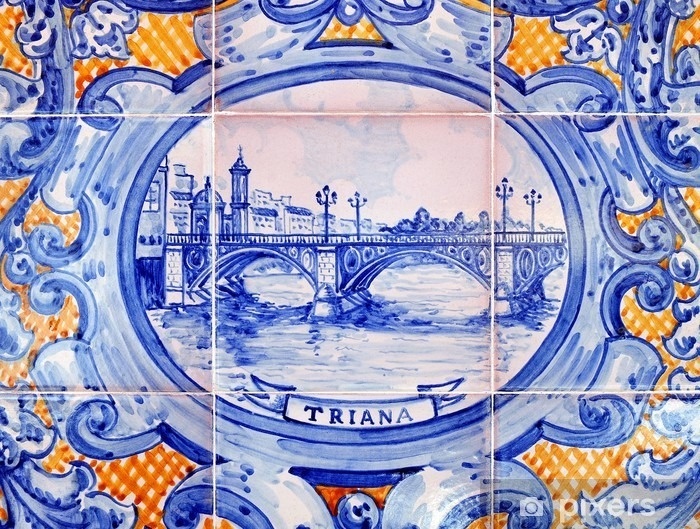
If there's one thread that has woven Seville together for centuries, it's the tile . It's in street names, devotional corners, hidden courtyards, and even grand settings like Plaza de España . We propose a visual itinerary (on foot from our homes in Santa Cruz, Arenal, and Triana ) to see the city with new eyes: those of clay, glaze, and design.

Al-Andalus brought techniques and a taste for tilework (geometric mosaics of cut pieces).
In the 15th-16th centuries, Seville became a major peninsular workshop: the arista technique (reliefs that separate colors) and the cuerda seca technique (dark outlines that "draw" the enamel) emerged.
Triana will be the great ceramic neighborhood: kilns, workshops and families that signed pieces until the 20th century.
In the Renaissance and Baroque periods, figurative panels (scenes, saints) and wainscoting became more common in palaces and churches.
With the 1929 exhibitions , the city embraced large-scale historical and decorative tilework (Plaza de España).
Today, Seville combines the restoration of antique pieces with contemporary design that has a local touch.
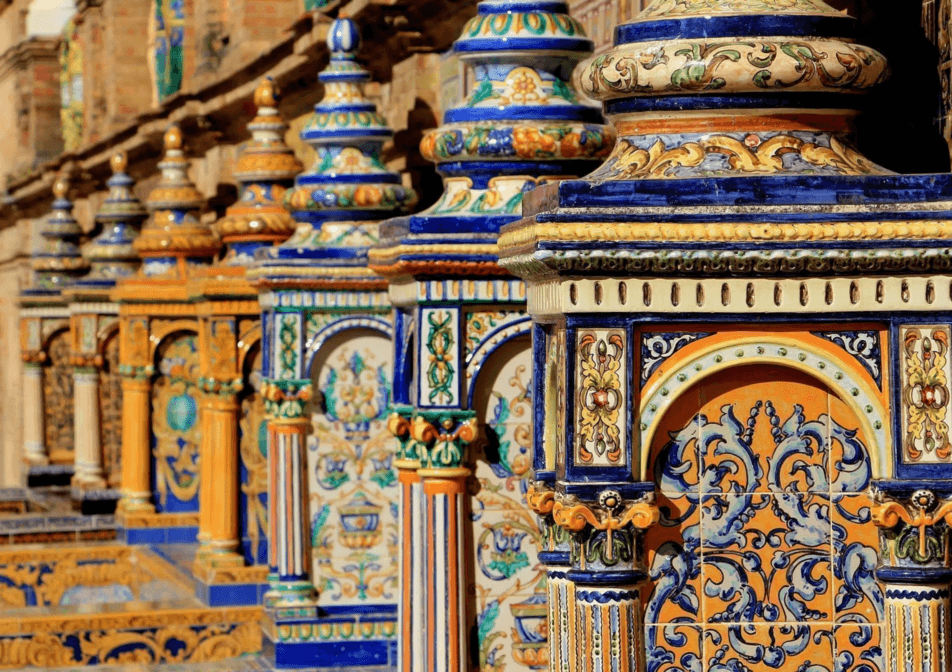
You can do it in two half-days: City Center–Santa Cruz–Arenal and Triana . All the stops are within walking distance of our houses.
Royal Alcázar (baseboards and halls)
A living museum of techniques: geometric tilework, Renaissance-style ridge tiles, and figurative panels. Notice the wainscoting: it changes from room to room and tells the story of different eras.
Strolling through Santa Cruz (plaques and devotional items)
In squares and on street corners you'll find ceramic signs and devotional tiles (Virgins, saints). Pause to look at lintels, railings, and courtyards.
Pilate's House (main courtyard)
A large "display" of tiles: 16th-century panels and compositions with tilework and borders. Look for inscriptions and coats of arms as well.
Archive of the Indies – Cathedral surroundings
Discreet ceramic signs and benches nestled among small squares and passageways. Ideal for understanding how understated stone and decorative ceramics can coexist.
Plaza del Cabildo (interior gallery)
Shops with ceramic typography signs hang from the arcades: a perfect exercise in lettering and Triana ornamentation.
Plaza de España (provincial banks)
The icon. Each province has its own bench, map, and ceramic scenes. The afternoon light is best. Look at the wainscoting tiles between the arches.
Maestranza and Arenal (historical signs)
Around the bullring, there are many taverns and shops with advertising tiles from the early 20th century. Keep an eye out for antique bars and counters.
Triana Market (panels and signs)
Tiles with nautical motifs, fruits, and trades. Perfect for combining photos and tapas.
Triana Ceramics Centre (former factory)
A museum space with kilns and historical pieces from Santa Ana and other firms. An ideal context for understanding processes and brands.
Chapel of Carmen and Betis Street
Facing the Triana Bridge, signs and devotional displays line the riverbank. At sunset, the river's reflections create a mirror effect.
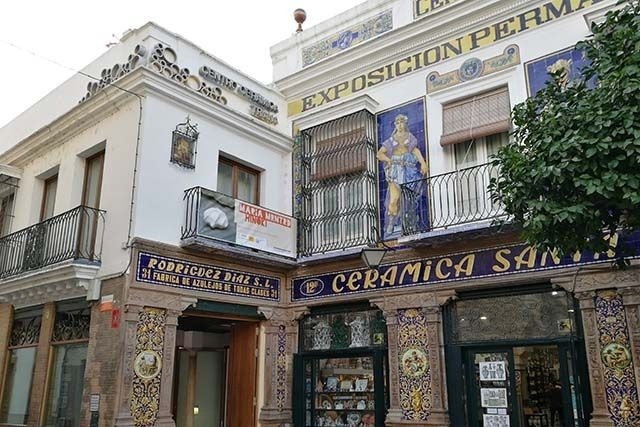
Tiling: geometric mosaic made with cut pieces (not painted). Flat surface, pattern created by grout lines.
Edge (relief): the contours protrude slightly; they separate colors like channels. Rough texture.
cuerda seca: dark lines (manganese) draw the outline; color fill “contained” by the line.
Hand-painted (majolica): smooth surface, floral/figurative motifs; the brushstroke is visible.
Devotional tile: figurative panel on corners/covers; usually has a cartouche with text.
Ceramic sign: typography and border; attention to shading and palette (blues, ochres, greens).
Signatures and brands: look in a corner for “Triana”, “Santa Ana”, “Montalván” or other legends of the workshop.
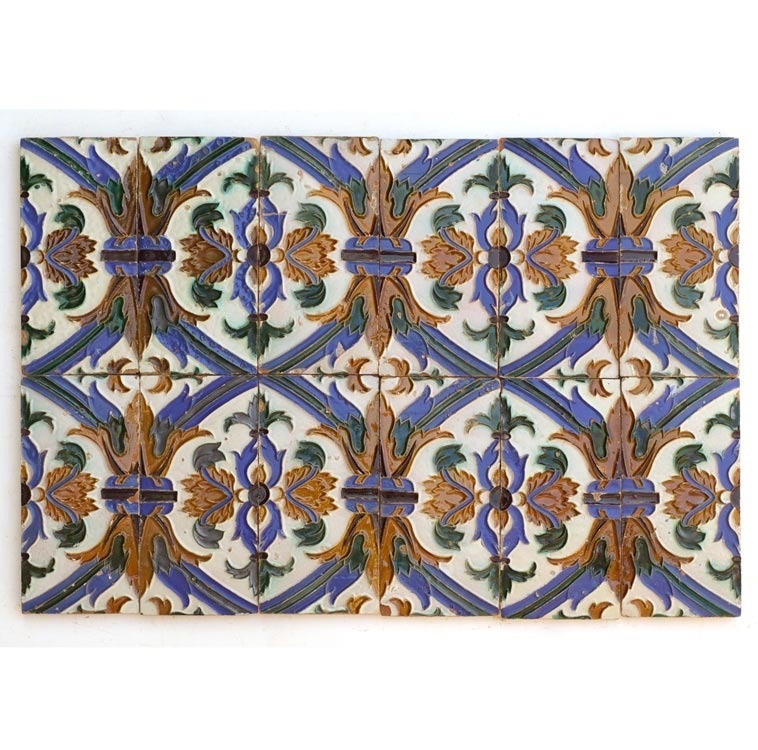
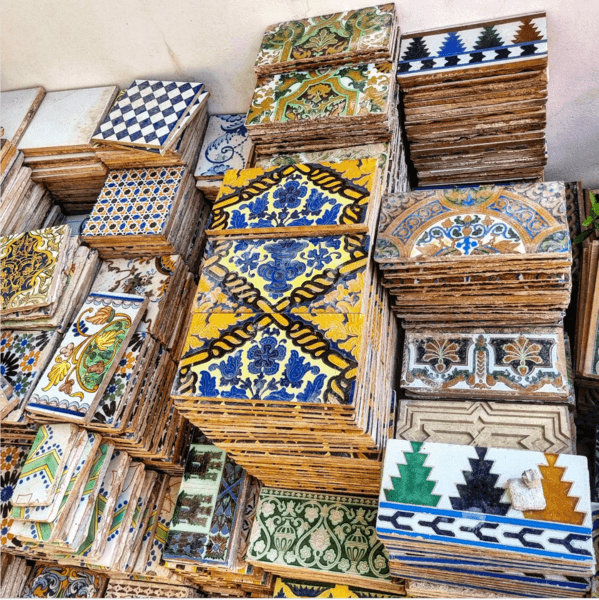
Always request double packaging (foam + box) and inquire about international shipping. Many stores offer itemized VAT and shipping documentation.
Santa Ana Ceramics (Triana)
Classic among classics: personalized signs, street signs and traditional motifs.
Triana Ceramics Centre – Shop
A carefully curated selection featuring contemporary pieces and historical reissues.
Artisan workshops of Triana (San Jorge / Antillano Campos)
Small workshops that work on commission (house numbers, signs, coats of arms). Ask about deadlines and colors.
Handicrafts from the city center (Arenal/Santa Cruz)
Small shops with reproductions and unique pieces. Ideal for carrying street signs or numbers.
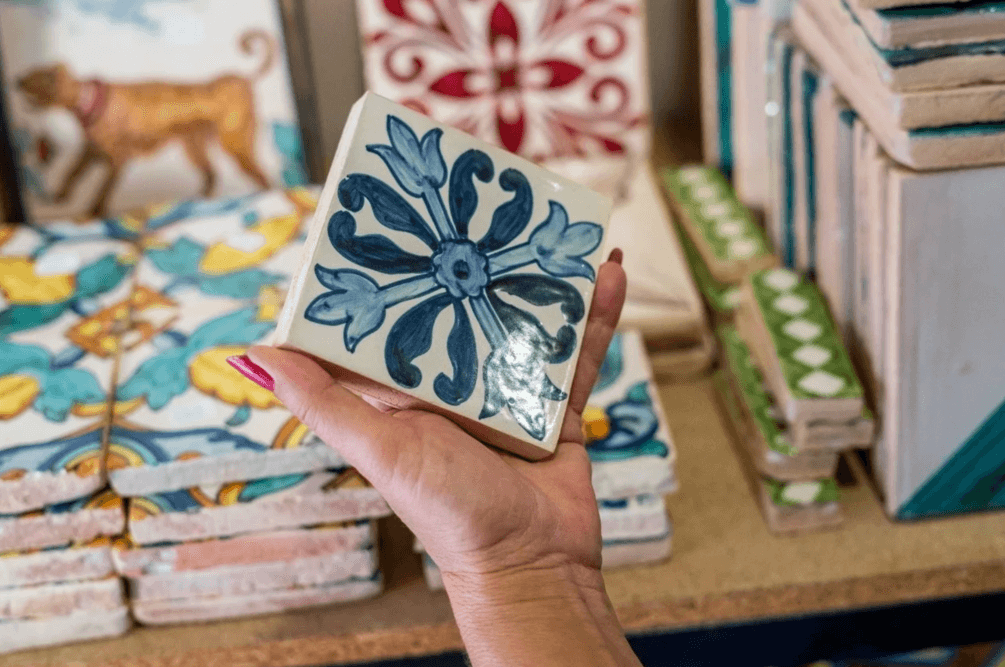
Buying advice:
If you fall in love with a large piece, ask about insured shipping and a wooden crate. For smaller spaces, 10x10 tiles or number plaques are perfect (they fit in a well-protected crate).
From the Governor's House / Contractor's House (center):
Santa Cruz → Alcázar → Archivo de Indias → Plaza del Cabildo → Arenal/Maestranza → (short taxi) Plaza de España.
From Casa Sevilla 1855 / Casa Sevilla 1920 (center-La Campana):
Streets in the center with signs → Santa Cruz → Plaza de España (afternoon).
From Casa Triana 1888 (Triana):
Market → Triana Ceramics Center → Chapel of Carmen → Betis → crossing to center at sunset.

Oblique light in the morning or afternoon: reveals the relief in the arista and cuerda seca.
Get closer : shoot details (signs, flowers, signatures) and a wide shot for context.
Respect : many pieces are heritage ; do not place backpacks on them or touch panels.
Follow the corners : devotionals live in street corners and on discreet facades.
Feet and floors : some patios hold ceramic carpets that go unnoticed.
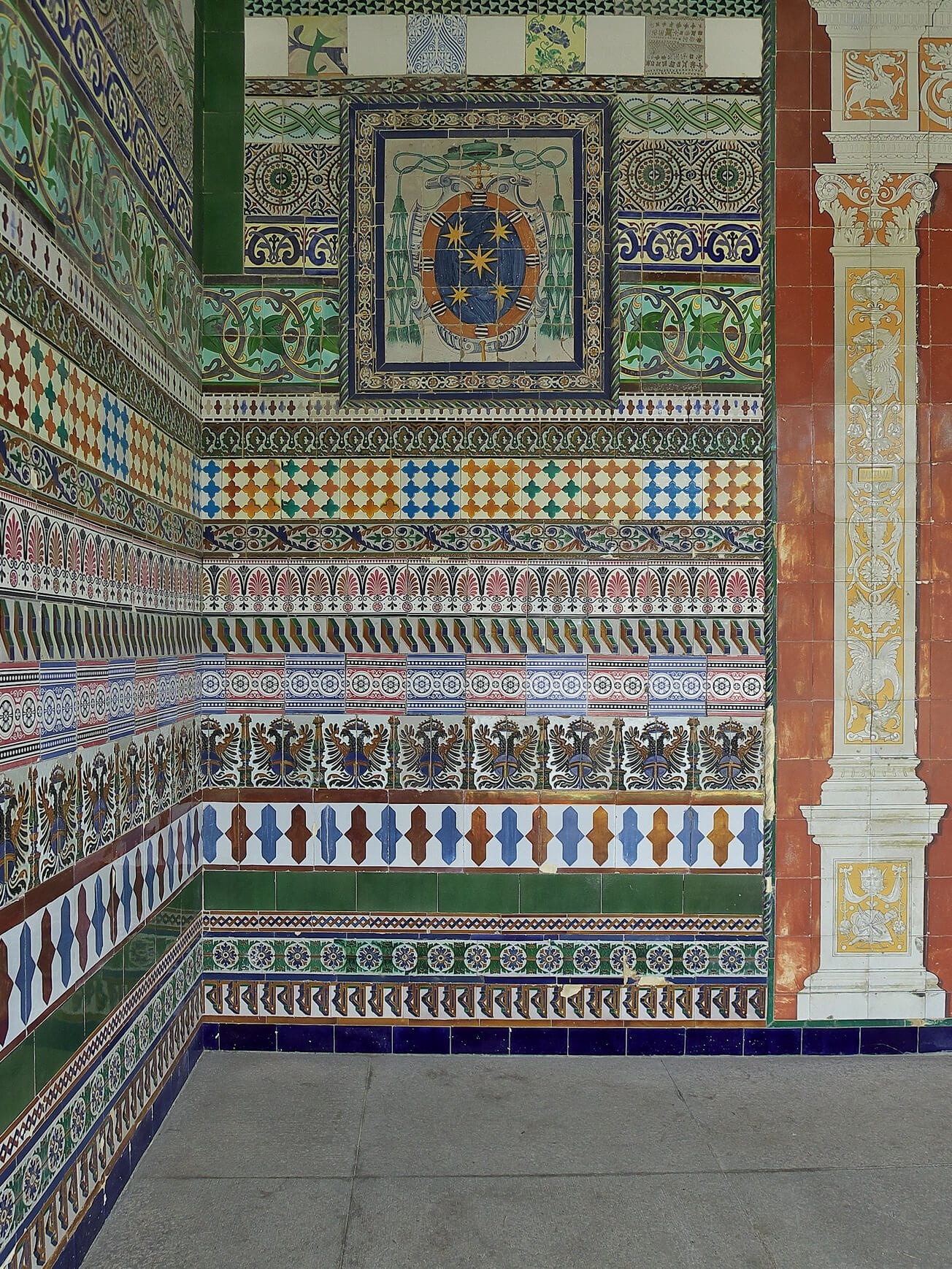
If you're looking for Seville tiles , this tile route will take you past facades, patios , and markets where Sevillian craftsmanship is still alive. And when you feel like slowing down, your Casa Época will be just steps away.
Book at epocasuites.com and experience Seville in its most beautiful language: clay, color and light .


